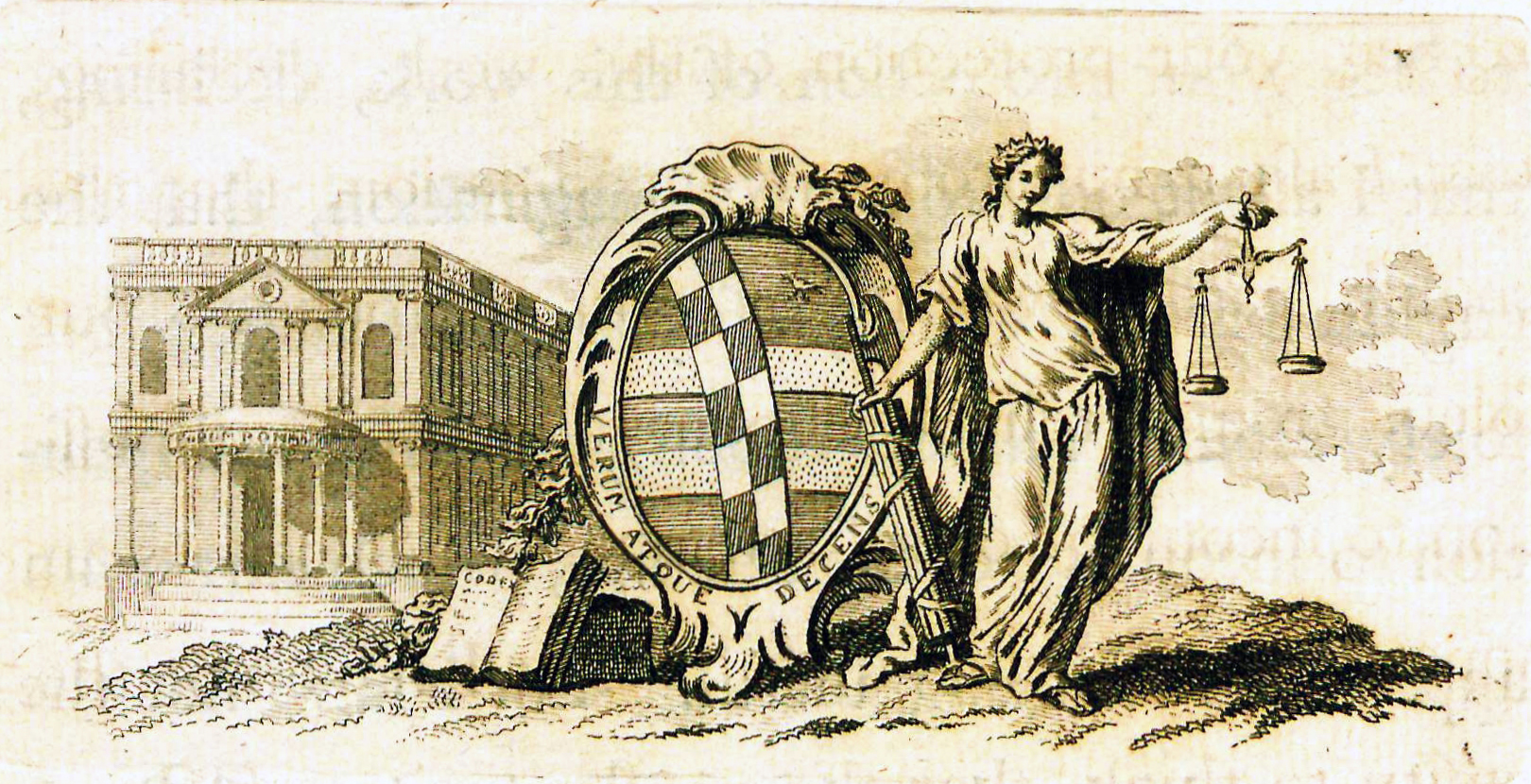The Four Books of Justinian's Institutions
D. Justiniani Institutionum Libri Quator, The Four Books of Justinian's Institutions
| Justinian's Institutes | |
|
Title page from The Four Books of Justinian's Institutions, George Wythe Collection, Wolf Law Library, College of William & Mary. | |
| Translator | George Harris |
| Published | London: Printed by J. Purser for M. Withers |
| Date | 1761 |
| Edition | Second |
| Language | Latin and English |
| Pages | iv, 73, 121, 100, 92, [11], [4] |
| Desc. | 4to (27 cm.) |
Tribonian did not create the Institutes from scratch.[7] Scholars posit that he polished and edited the drafts of two law professors in making the final version.[8] In addition, Tribonian relied heavily on older Roman law sources, especially the Institutes of Gaius.[9]
This volume, D. Justiniani Institutionum Libri Quator, The Four Books of Justinian's Institutions, is a translation with commentary by George Harris (bap. 1721, d. 1796). Harris, a lawyer educated at Oriel College, Oxford, first published his version of the Institutes in 1756.[10] He intended his work to be "an introduction to Vinny's Edition."[11]
Evidence for Inclusion in Wythe's Library
Listed in the Jefferson Inventory of Wythe's Library as "[H]arris’s Justinian. 4to." and given by Thomas Jefferson to James Dinsmore. Brown's Bibliography[12] suggests either the first (1756) or the second (1761) edition, noting that Jefferson sold a copy of the latter to the Library of Congress.[13] George Wythe's Library[14] on LibraryThing indicates "Precise edition unknown. Editions with similar imprints were published at London in 1756 and 1761" and also mentions Jefferson's copy at the Library of Congress. The Wolf Law Library purchased a copy of the second edition.
Description of the Wolf Law Library's copy
Bound in contemporary full calf, rebacked in period style. Title page signed "J. Wickham 1789." Purchased from The Lawbook Exchange, Ltd.
View this book in William & Mary's online catalog.
References
- ↑ The Columbia Encyclopedia, s.v. "Corpus Juris Civilis," accessed March 28, 2014.
- ↑ Justinian’s Institutes, trans. with intro. by Peter Birks and Grant McLeod (Ithaca: Cornell University Press, 1987), 8.
- ↑ Ibid., 12-13.
- ↑ Ibid., 12.
- ↑ Ibid., 15-16.
- ↑ Ibid., 15.
- ↑ Ibid., 12.
- ↑ Ibid.
- ↑ Ibid., 16.
- ↑ T. A. B. Corley, "Harris, George (bap. 1721, d. 1796)," Oxford Dictionary of National Biography (Oxford University Press, 2004- ), accessed March 28, 2014.
- ↑ The Four Books of Justinian's Institutions, trans. with notes George Harris (London: 1756), viii.
- ↑ Bennie Brown, "The Library of George Wythe of Williamsburg and Richmond," (unpublished manuscript, May, 2012) Microsoft Word file. Earlier edition available at: https://digitalarchive.wm.edu/handle/10288/13433.
- ↑ E. Millicent Sowerby, Catalogue of the Library of Thomas Jefferson, 2nd ed. (Charlottesville: University Press of Virginia, 1983), 2:397 [no.2191].
- ↑ LibraryThing, s. v. "Member: George Wythe," accessed on June 28, 2013.
External Links
Read this book in Google Books.

